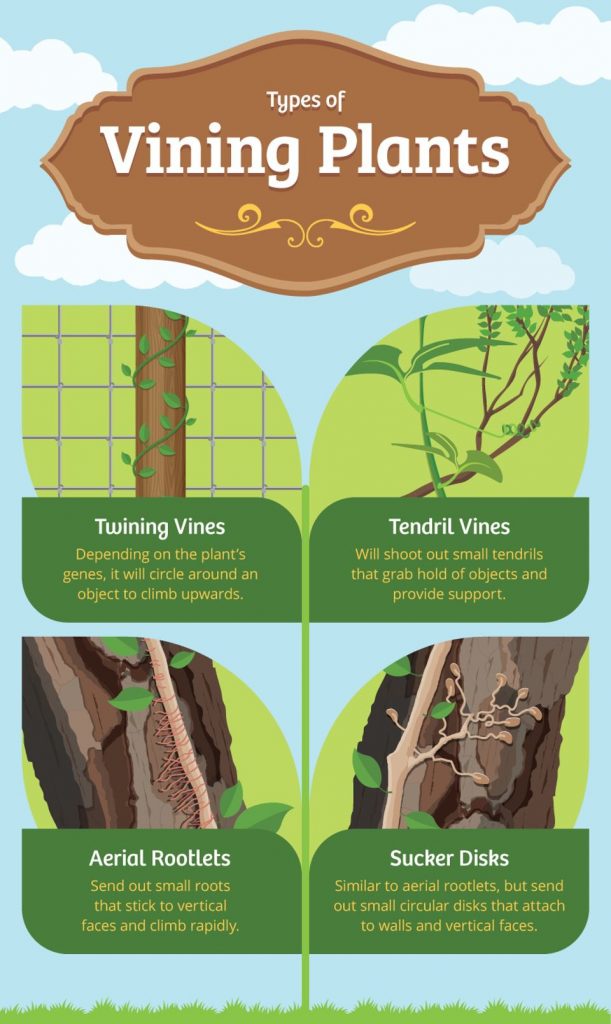As spring approaches, gardeners around the world are itching to get out into the soil and start growing again. In their haste, they often forget about one of the most interesting types of plants they can grow: vining plants!
Most gardeners have little experience with vining plants, and for good reason: they can be confusing when you first look into them. Thankfully, they’re not that complicated. Once you know how they grow and how to incorporate them, using vining plants in your garden and landscaping is simple.

Due to the wonderful biodiversity of plants, there are four major ways that vining plants climb up surfaces.
Vines that climb by twining are the simplest to take care of. All they require is a lot of support, as they can stress fragile structures that they climb up.
These vines climb by encircling the vertical support. The specific way that they encircle is dependent on that particular plant’s genetics, but the basic idea is simple: twining vines send out shoots that flail about until they hit something to latch onto.
Tendril vines are the second major class of climbers, operating by sending out very thin tendrils that will whip back and forth until they find something to attach to. The thin hairs on the tendril respond to touch and when activated will cause the tendril to cling to the support, providing the stability for the vine to continue growing upward. Grapes are the most recognizable tendril vining plant.
Some of the most popular vining plants, like English ivy, climb by producing what are known as aerial rootlets. That’s just a fancy word for small, hairy, and adhesive roots that run along the bottom surface of the vine. These stick to vertical faces and provide the support needed for the vine to continue its vertical climb.
Sucker disks are a hybrid of aerial rootlets and tendril vines. These plants send out tendrils that have little disk-shaped suckers at the end. The suckers attach to supports and provide enough tension for the rest of the vine to keep on growing.
No matter which method a vining plant uses to climb, they all have one thing in common: they grow fast and they are relatively flimsy. This is because they rely so heavily on the support structure they’re growing on to provide the structural integrity that most other plants have innately.

The Women's Outdoor News, aka The WON, features news, reviews and stories about women who are shooting, hunting, fishing and actively engaging in outdoor adventure. This publication is for women, by women. View all posts by The WON